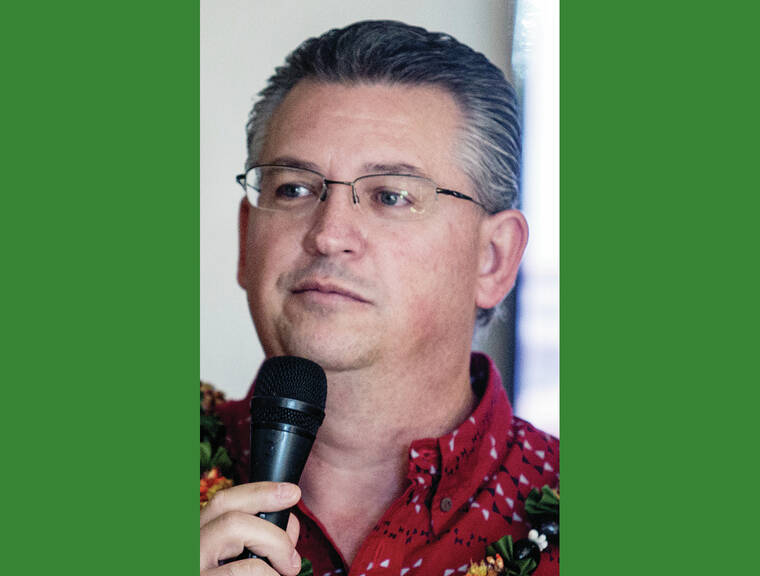A report by the University of Hawaii Economic Research Organization predicts that the return of Japanese travelers this year will be necessary to shield the state from the brunt of a potential global economic recession.
The report, published today, notes a complicated interplay between the state’s continuing recovery from the COVID-19 pandemic, the reduction of federal pandemic support programs, and global incidents including rising inflation, the Russian invasion of Ukraine, and COVID shutdowns in China.
Overall, the report predicts that the state’s employment rate and gross domestic product will begin to recover throughout the year, but “clearly deteriorating conditions in the US and global economies” will temper that growth substantially.
Even without international travel, UHERO reported that the state’s average daily visitor rate was 88% of prepandemic levels. But Japanese travelers — who accounted for 12% of visitor spending in Hawaii prepandemic — have not yet returned to full numbers, in particular because of lingering COVID travel restrictions, including a 10,000-person limit on the amount of inbound travelers permitted to the country each day.
But UHERO predicts that the delayed return of Japanese travel might be perfectly timed after all, since it will give the state’s economy a much-needed boost in the midst of global economic volatility.
“Were it not for the anticipated return of international visitors, we would be marking down our forecasts because of the combined effects of war, inflation, supply bottlenecks, and pending (Federal Reserve) interest rate hikes,” the report read. “While we think ongoing tourism recovery will offset these forces in Hawaii, they nevertheless represent an increasing recession risk.”
UHERO predicts the nation’s overall economy will only grow 2.5% this year, thanks to the various crises around the world.
Some of those global effects will still be felt in Hawaii regardless of the return of Japanese travelers. UHERO predicts that the state’s finance and real estate sectors will see a 2% decrease in earnings this year because of the loss of pandemic stimulus programs, while the inflation rate in Honolulu hit 7.5% in March, the highest it has been since 1991.
Furthermore, although UHERO predicts that there will be 4.4% more jobs in the state by the end of the year, this will be offset by a decrease in workers.
The state’s population has declined by nearly 14,000 people — about 1% — since 2019. Hawaii Island, however, is an exception: UHERO reports that the Big Island’s population dropped by about 1% in 2019, but has more than rebounded since then.
The report also concedes that the international travel that could shield Hawaii from global economic instability could itself be hindered by that instability. The value of the Japanese yen is 18% lower than it was prepandemic, while the cost of travel and lodging has risen.
Ross Birch, executive director of the Island of Hawaii Visitor Bureau, told the Tribune-Herald on Wednesday that should regular travel resume from Japan today, the cost of a weeklong trip to Hawaii would be between $3,500 to $5,000 per person, a roughly $1,000 to $1,500 increase from before the pandemic. With the yen’s value tracking below the U.S. dollar, “add another 15-20% on top of that,” he said.
“I think initially, there’s enough pent-up demand and the more affluent Japanese travelers will still come here,” Birch said. “Financially, they haven’t done much traveling at all for the past two years, so they’ve probably saved up enough.”
However, he added that the increased lodging availability on Oahu compared to neighbor islands means that Honolulu likely will capture most of the summer and fall Japanese travelers.
Birch also said that rising costs and limited availability could finally cause the other shoe to drop for the state’s decade-long growth in tourism.
“There’s always a travel cycle where things get more expensive until they reach an expense level that causes people to choose to go to a different place,” Birch said. “And then with demand going down, that drives costs down. But we’ve missed that cycle for a while, for eight to 10 years. With availability issues and costs, we might be getting to the other side of that cycle again.”
Meanwhile, the report notes that the pandemic remains a perpetual concern, as the BA.2 variant is causing a surge in cases throughout the world.
“Hawaii has seen a rapid rise in recent weeks, in some cases tied to large seasonal school events like proms,” the report concludes. “The lower severity of omicron variants and the public’s likely pushback against renewed restrictions suggests that any economic effects of this wave are likely to be small. But clearly it is too soon to tell. A significant climb in hospitalizations could change the calculus for policymakers.”
Email Michael Brestovansky at mbrestovansky@hawaiitribune-herald.com.



